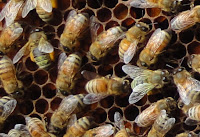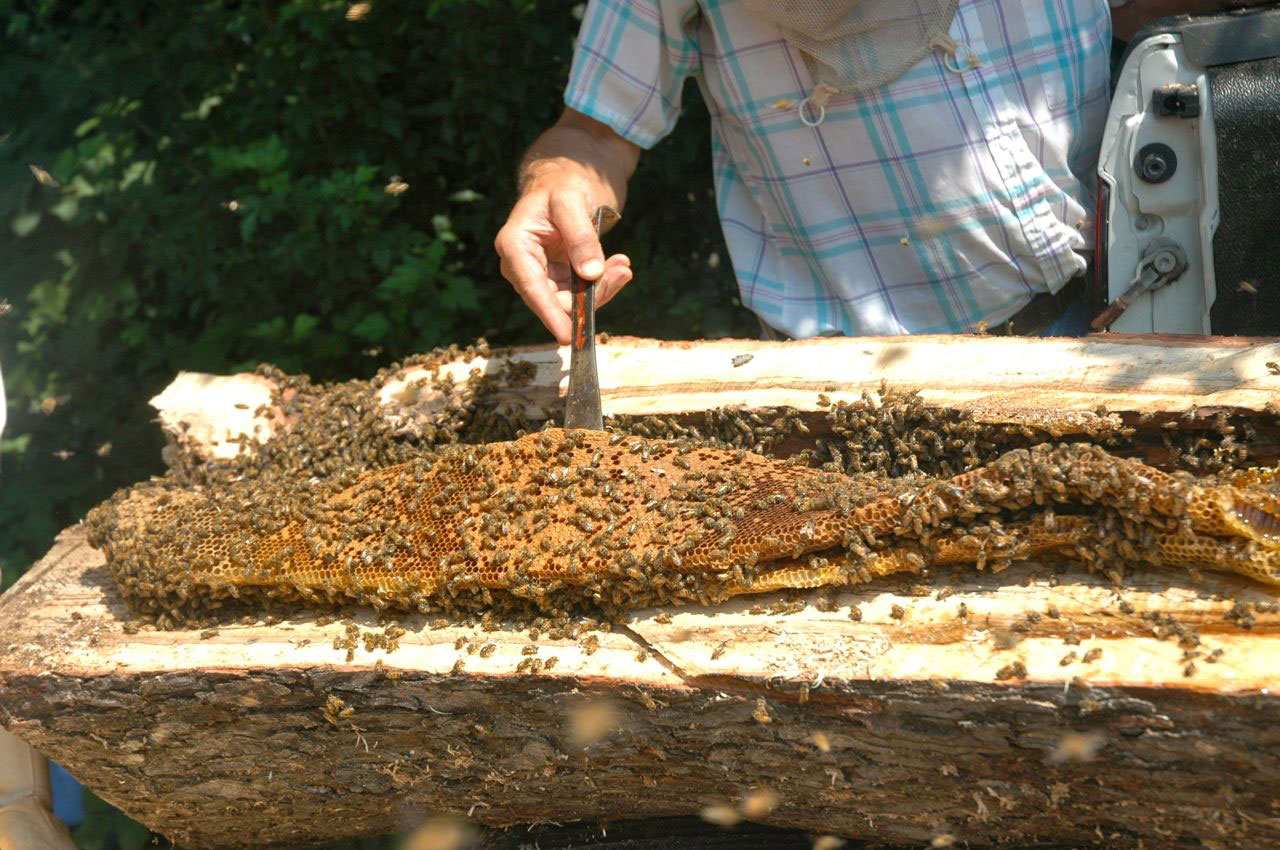Was removing propolis from the top feeder tonight which got me to thinking just what is propolis and where does it come from? It is not a bee-made product such as wax, but it is produced by the bees.
They use it to close up distances less than 3/8" apart. Bees are happiest when things are precisely 3/8" apart from one another. Anything more than that and they will build it out with comb until it is 3/8" apart. Anything less than that and they fill it up with propolis. This 3/8" distance is known as 'bee space'.
Propolis is made from resin such as sap, wax, essential oils, pollen and a host of other trace ingredients. It is a natural antibiotic and anti-fungal and is prized for its medicinal properties. Bees will also use propolis in the hive as an antiseptic paint to protect the walls, frames, etc. Everything within the hive that comes in contact with the bees, they will lacquer with propolis. Interestingly, a predator killed within the hive that is too big for the bees to carry away will be mummified in a covering of propolis.
 |
| Sap in the bee's baskets. |
The foragers store the harvested sap in its leg baskets to bring back to the hive. Once mixed, the propolis can be any color, depending on the plant source. It has a bitter taste but a sweetish scent.
Because of its healing properties, propolis is used in ointments, lip balm, lozenges, etc. It is even available as a toothpaste where it is thought to prevent tooth decay!
They say it is easy to harvest propolis by placing a small-holed screen under the inside cover after the summer honey harvest. The bees will busily fill the holes with winter on the way. Once covered with propolis, place the screen in the freezer. When good and froze, flexing the screen (similar to twisting an ice cube tray) will release the brittle propolis. I may try this next year, just to say I did. I'm not sure what I'll do with the harvested propolis but I have all winter to think of something. :-)

 I've mentioned this before but the Sasha hive is so very different from the OV hive and the differences are quite noticeable. Not only are the Sasha bees gentler than the OV bees but they are smaller and lighter in color. Only one guard bee flew up to check me out. They still have a fair amount of honey on the frames so will hold off feeding them for a bit.
I've mentioned this before but the Sasha hive is so very different from the OV hive and the differences are quite noticeable. Not only are the Sasha bees gentler than the OV bees but they are smaller and lighter in color. Only one guard bee flew up to check me out. They still have a fair amount of honey on the frames so will hold off feeding them for a bit.




































